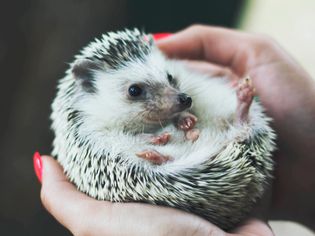Explore more:
- Small Pets
- Pet Mice
Taming pet mice is very possible, though it may take some patience. With time and consistency, you should be able to win the trust of your pet mouse. It can be a bit tricky to handle pet mice as they're small and quick, but once they're tamed, they can be picked up, handled, and can make great pets, (even for kids).
It's easiest to tame a mouse that's relaxed and comfortable in its surroundings. Starting with young mice will make the taming process much easier. Use lots of treats and work slowly. Make sure your mouse is comfortable with each step before proceeding to the next.
Taming a mouse is really the same thing as gaining its trust. Your mouse must believe that it is safe with you, despite your enormous size. Throughout the training process, try to avoid doing anything that will stress your pet mouse.
You'll need to do routine things like cleaning the cage, but keep in mind that moving slowly and gently throughout these necessary chores will help in the process of gaining your mouse's trust. Until your mouse is tamed, there is a chance that it will bite. Mice can bite hard. If they bite, it is because they are scared. If your mouse does nip you, don't shake your hand to get it off, or get angry, as this will just make matters worse. If your mouse bites, back off and do more to gain its trust.
It is best not to allow pet mice to run around outside their cage unless they are tame. The stress of chasing, catching, and returning them to their cage may scare them and make them fear their owners. If you allow your pet mouse time outside of the cage, make sure the area is very well mouse-proofed as mice can get through very small cracks.
Mice can usually be kept in small groups of females (since you will get baby mice from housing males and females together) but males usually do best alone, otherwise they will fight with each other. Female mice usually bond well with each other and this should not affect the taming process. In fact, a single mouse is more likely to be stressed and nervous and therefore may be more difficult to tame than a female mouse that has other female mouse roommates.
When your mouse (or mice) arrive, they'll need time to adjust to their new surroundings and begin to trust you. This can be hard for young children who want to play with their new pets right away, but its worth a few days of frustration as patience can lead to wonderful results. Before you start interacting with your mouse:
After a few days, your mouse should be able to stay calm when you come into the room and sit down next to its cage. Now, you can start interacting with your new friend, taking it step by step to be sure it's bonding with you:
Now that your mouse is climbing onto your hand and allowing you to scratch it, you can start to take your mouse out to play. Mouse owners and young children, in particular, are eager to pick up and hold their pet mouse. While holding a mouse isn't a problem, there are some things to remember as you begin to tame and handle your pet mouse.
Mice are naturally timid animals, and small noises or motion can frighten them. They are also very small and quick, and can easily hide inaccessible places. To keep your mouse safe outside the cage, you'll want to create a play area from which your mouse can't escape. You can do that by, for example, building up a circle of pillows, playing with your mouse in a small space like a bathroom, or purchasing a solid-sided puppy corral.
Once you know your mouse is safe, you can start to "proof" its friendly behavior by gently challenging it with unexpected sounds and new people. For example:
You may have to go through a process of teaching your mouse to trust young children, as they are often louder and faster than adults or teens.

As a veterinary nutrition specialist and long-time dog enthusiast, I’ve tested dozens of...

Houseplants can improve air quality, reduce stress, and bring life into our homes—but no...

IntroductionParakeets (budgies) are intelligent, social birds capable of mimicking human s...

IntroductionChoosing the right toy for your pet means more than just entertainment—it’...

IntroductionCommon household cleaners contain chemicals that can irritate your pet’s ski...

IntroductionCats are obligate carnivores, meaning their bodies require nutrients found pri...

Dealing with Pet Allergies: Symptoms, Causes, and SolutionsLiving with pet allergies can f...

Many people who have never touched a pet hedgehog before wonder if hedgehogs are really p...

Hedgehogs have smooth spines on their coat, similar to the bristles of a brush. Unlike ri...
Comments on "How to Train Your Mouse to Play with You" :